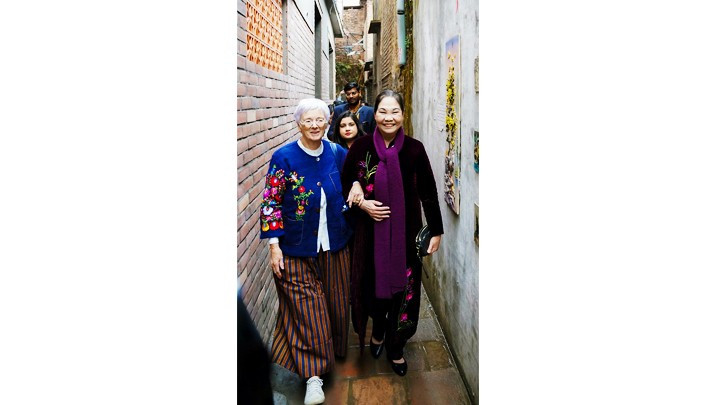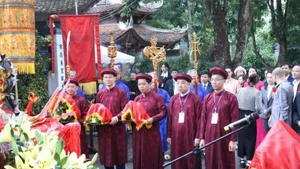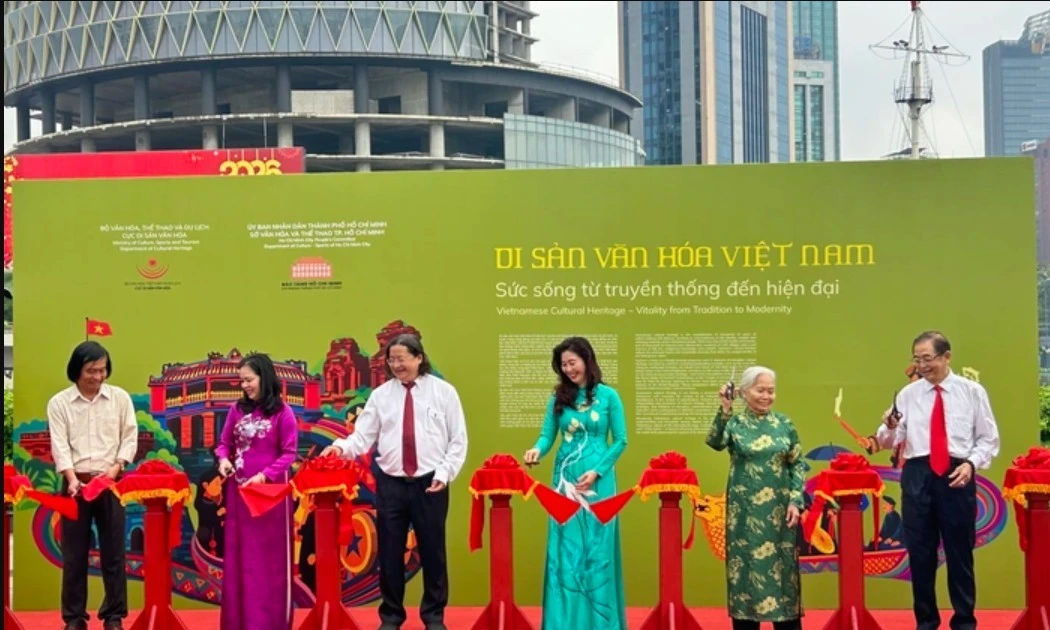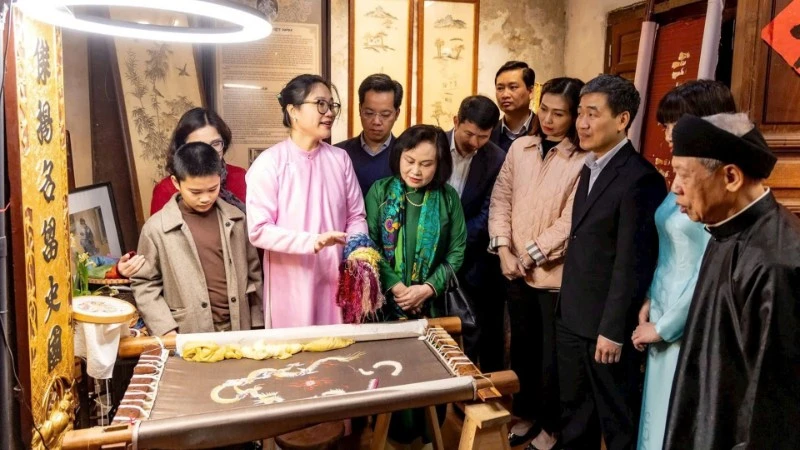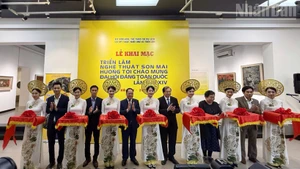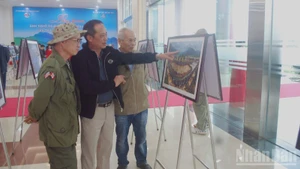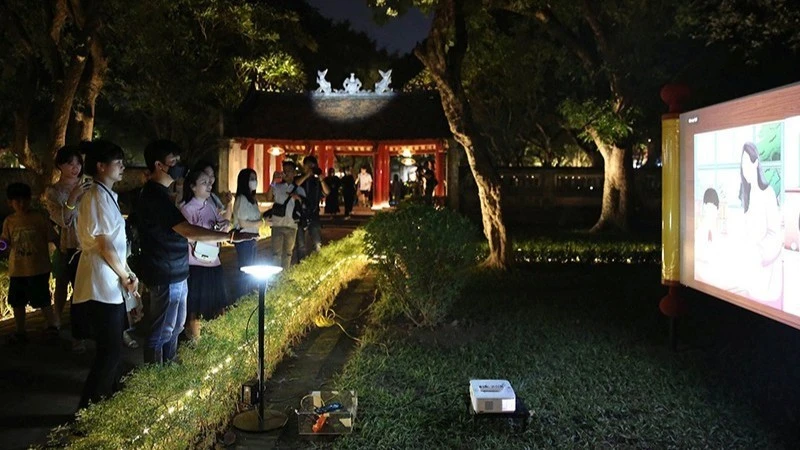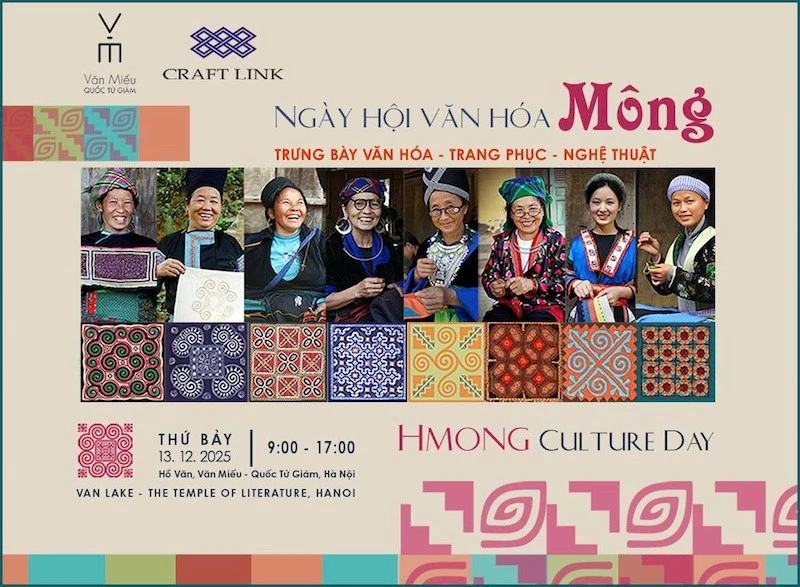Deeply bonded to the craft, she has become an inspiring figure—embodying strength and openness to innovation to elevate the essence of Bat Trang ceramics to new heights. She has played a vital role in technological innovation, brand building, and developing craft village eco-tourism. The artisan granted an interview to Thoi Nay (Present Time) publication of Nhan Dan (People) Newspaper.
Q: How do you assess the changes of Bat Trang Ceramic Village today? In your opinion, what is the most significant and game-changing transformation?
A: I am a 15th-generation descendant of the Ha Hu Family, one of the 19 original families still residing in Bat Trang Village. We work within a large community and share both joyful and difficult times, enabling us to stay committed to the craft and thrive. I grew up during the intense years of the resistance against the American imperialists. In 1972, after graduating high school, I began working at the Bat Trang Porcelain Factory. At that time, production followed state quotas, which did not encourage creative expression among skilled artisans. In 1986, the Government initiated the Doi Moi (Renewal) policy, allowing private businesses to participate in the economy and encouraging growth. This was a golden opportunity for people, including myself, to eagerly return to the village, set up kilns, and resume the craft to escape poverty and follow in our ancestors’ footsteps with renewed passion and innovation. That shift was the most pivotal transformation for Bat Trang.
Today, Bat Trang is one of the most developed craft villages in the country. Its traditional ceramics craft and festival have been recognised as National Intangible Cultural Heritage by the Ministry of Culture, Sports, and Tourism. Recently, Bat Trang also became a member of the global network of Creative Cities in Crafts and Folk Arts. This is a pride not only for Bat Trang but for all of Vietnam’s traditional craft villages.
Q: What are you most proud of and eager to share in the journey of developing the craft village?
A: I am proud of the contributions to the transformation of production technology and ceramic techniques in the village. Back in the 1990s, ceramic production primarily used coal and firewood for firing, causing severe environmental pollution. Bat Trang was once among the most polluted areas in Hanoi, burning 200–300 tonnes of coal per day. It was also one of the localities recording the highest cancer rates. By the early 2000s, the export market began to shrink.
I constantly wondered how to develop our traditional craft sustainably. One key solution was to replace outdated charcoal kilns to high-tech kilns with clean fuel, liquefied gas. We also proactively invited ceramics producers and mechanical workshops to learn about and replicate imported gas kiln technology. Within six months, hundreds of gas kilns were assembled and successfully used in Bat Trang, marking a turning point in both production technology and the quality of our ceramic products.
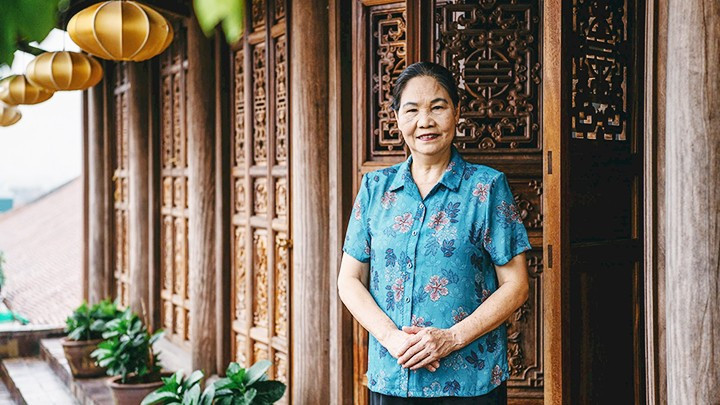 |
Q: You are often recognised as a pioneer in the village’s innovation journey. What keeps you going through all the challenges?
A: I have always been haunted by this thought: if our ancestors, in the 14th and 15th centuries, were able to export ceramics internationally, why can’t we? So, after leaving my job in a state agency, my first goal was to export our products. In the early 1990s, I connected with some corporations to begin exporting ceramics. In 1995–1996, the government allowed private entities to export directly, without going through state corporations. We then actively developed international markets through major trade fairs abroad. The more I travelled, the more I realised the importance of preserving cultural identity while also embracing innovation and applying science and technology to produce highly artistic and emotionally resonant products tailored to each market. And to do that, human resources are essential.
Q: In recent years, Bat Trang has developed strongly tourism activities, particularly experiential tourism. Could you share more about this direction?
A: We have conducted research and implemented parts of a large-scale eco-tourism project in the ancient village of Bat Trang. Here, tourists not only visit the craft village or admire the unique landscape and artwork but also participate in various hands-on activities including making ceramics, eating with local workers, and more. Every resident can become a tour guide or a storyteller about the village; each household forms a part of a living museum that honours the legacy of our ceramic heritage.
We also strive to build connections with other craft villages and traditional art forms, enriching visitors’ experiences and giving them a broader sense of Vietnam’s cultural beauty—even if they only visit one place. Experiential tourism opens up many opportunities, especially by changing community mindsets and encouraging people to actively and enthusiastically take part in sustainable development.
Q: What are your hopes for the younger generation in this era of high technology development?
A: We are very happy to see the younger generation benefiting from both the rich heritage of the craft and access to global learning and innovation opportunities. I am pleased to see that young people today have strong awareness and are working together to make new innovations like Chinese language training centres. Through the Hanoi Handicraft and Craft Village Association, they signed a partnership with the Jingdezhen Ceramic University in Jiangxi, China. This gives Bat Trang youth yearly opportunities to study abroad and advance their craft.
I hope and trust that young people will not just preserve the handicraft, but they will take it further. They will use technology to tell the story of ceramics; they will innovate without forgetting their roots; they will modernise while preserving the soul of the earth, the fire, and the hands of Vietnamese ceramic artisans.
Q: If you could share a message with ceramic lovers, especially those considering a future in the craft, what would you say?
A: Ceramics is not just a trade, but it is a creative journey and a means of preserving culture. If you love ceramics, be willing to devote yourself! Let your hands get dirty with clay, let your heart beat with the rhythm of the fire, and let your soul roam free in each line and form. Every piece is a story and a mark in the flow of heritage. If you dare to dive in, you should love with all your heart and passion. I believe you will receive truly worthy rewards.
Thank you very much!
